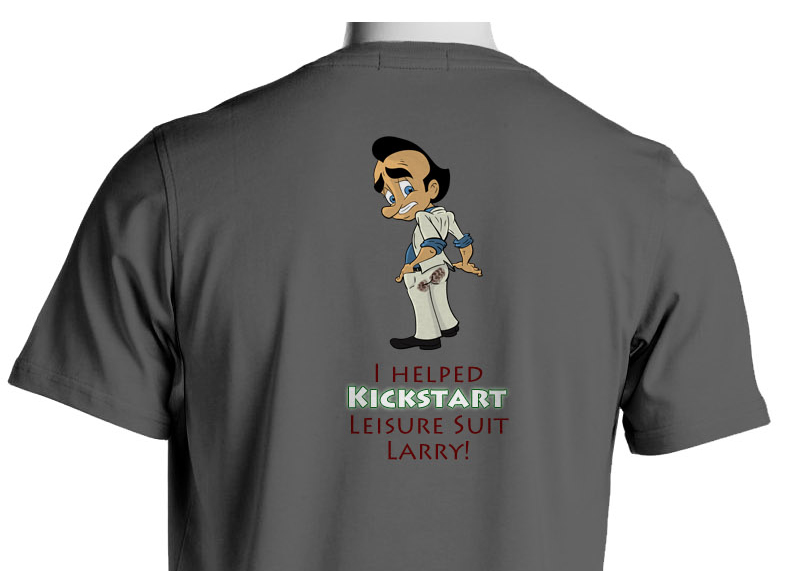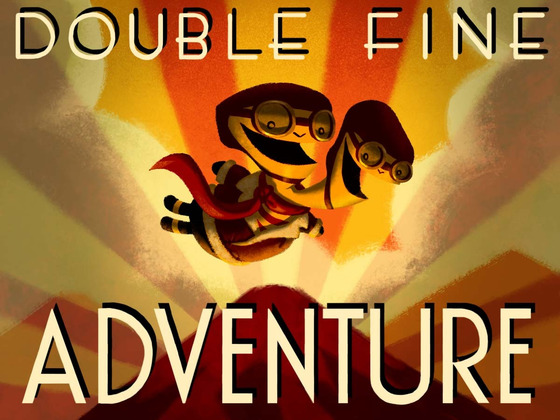By Meelad Sadat
Kickstarter is an ecosystem where people can pursue their dreams. That’s how Jon Kimmich, co-author of The Crowdfunding Bible, describes it.
Kimmich was among a panel of the game industry’s most recognizable faces of the crowd funding movement at GamesBeat earlier this week. Tim Schafer was there, arguably the man who started it with his hugely successful Kickstarter effort for Double Fine Adventure. So was Paul Trowe, who is now crowd funding the next Leisure Suit Larry. And there was Brian Fargo, who called his Kickstarter driven Wasteland sequel, “One of the most anticipated games I’ve worked on.”
From a game developer perspective, every one of them has achieved a dream. They all have big hits under their belts. They run independent studios. People know them. They found a different dream to pursue on Kickstarter. It’s bypassing publishers even when it comes to funding development. Sidestepping the publisher-retailer connection and getting your game in players’ hands digitally is old hat. Now you can get them to fund and front end market it for you too.
As Schafer put it, “You hear from your fans that they want something. The gatekeepers say no. Crowd funding allows the fans to bypass the gatekeeper and say, yes, we want this thing.”
In other words, it’s communal capitalism for the game industry.
The panel moderator was Sebastian Haley, culture editor at GamesBeat. Appropriately enough, Haley is in the final hours of his own successful Kickstarter drive for Z., a zombie themed card game. In discussions prior to the panel, Haley had questioned whether his project was going to be funded. It was trending just shy of its goal of $100,000 until days before deadline.
Haley pointed to one of his project’s biggest challenges as dealing with press burnout, admitting that as a journalist he can get dozens of notices about game Kickstarter projects in a day. In an interview with [a]list daily, Haley said it’s less about the press having cooled to the concept than being “frozen solid.”
“You have to create an event,” said Schafer. “When I launched, the Kickstarter campaign was the story itself.”
“The bar is being raised,” said Kimmich. “You have to get creative. What’s fundamental about Kickstarter is that it’s consumer marketing. All of the things you need to consider in that that regard still apply. You have to decide, is this a product that I can crowd fund, who’s interested, how do I find them “

Fargo likened it to something else, calling it a Jerry Lewis telethon.
“We were working every day,” he said. “I’d never done PR before. For people [in the press] whose contact information I didn’t have, I Tweeted them. I went animal on them. It worked. We were doing two interviews a day.”
“Every time you Tweet, you see a reaction and money coming in,” said Fargo. “It becomes obsessive.”
Trowe added, “I didn’t sleep for 30 days.”
Trowe’s decision to turn to Kickstarter came from Schafer. The two ran into each other when Double Fine Adventure had doubled its goal, raising $800,000 with a lot of time to go. It ultimately raised $3.3 million. Schafer convinced Trowe to give it a try with Leisure Suit Larry.
“Greg, Tim’s producer [on Double Fine Adventure], taught us everything we needed to know about Kickstarter,” said Trowe.
Trowe recognized it as a tool to get people to pre-order his game before he decided to make it.
“That’s exactly what we did, use Kickstarter as our market validation model,” he said.

When it comes to setting a funding goal, the panel agreed that projects have to ask for exactly what they need, possibly a little more. The advice was not to short shrift in hopes of boosting your chance of success. The danger of not being able to fulfill a successfully funded project is too great for that.
“Don’t make promises you can’t keep,” said Kimmich.
“Especially if you have a reputation in the industry,” added Trowe.
Schafer pointed out that it’s OK to scope down the project, and chances are projects will eventually run into greater costs. He said that’s especially true for reward fulfillment for backers. In his case, Double Fine had to handle more than 87,000 backers.

Kickstarter is causing ripples in the game industry. For venture capitalists, it’s a wave that could swamp part of their business by taking away early stage and angel investments. These are deals where they can usually swap very little capital for equity.
“The most disruptive effect is in the investment community,” said Fargo. “Start-ups don’t have to give their company away with VC investors. If I was a VC, I’d want to say go for it, test it on Kickstarter and see if it works. But then if it works, you don’t need the VC.”
“But it’s not for everybody,” he said. “It’s not for pharmaceuticals.”
The consensus on the panel was that crowd funding game development is here to stay, and it could mature into equity based funding.
“I’d love for it to be equity based,” said Trowe. “Then you’d get bigger champions. People are smart enough to know if they get their friends, it’ll drive up their investment.”
Schafer suggested Double Fine’s next effort could involve some sort of equity for backers.
As for whether big publishers will experiment with it, Fargo cited frustration with their business model is what’s driving the movement in the first place. He said it’s evident now how that frustration doesn’t only exist among game makers but fans as well. For the former, there’s also being able to get away from publishers to have complete creative freedom and no third-party oversight.
“I’m going to be twenty five percent more efficient because I’m not working with a publisher,” said Fargo.
To which Schafer quickly added, “Yeah, no making E3 demos.”

